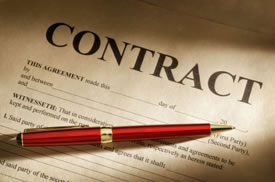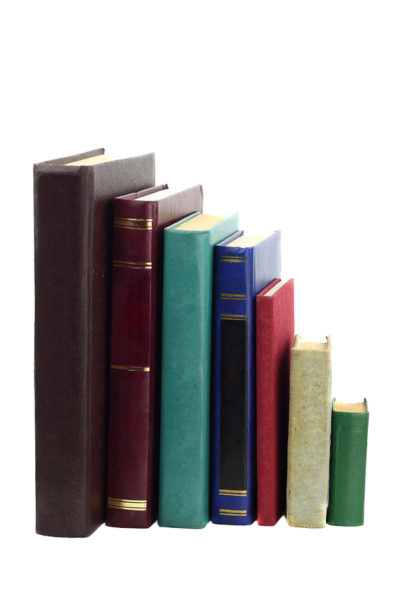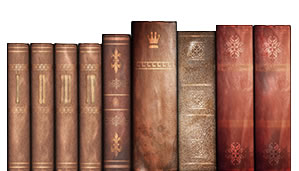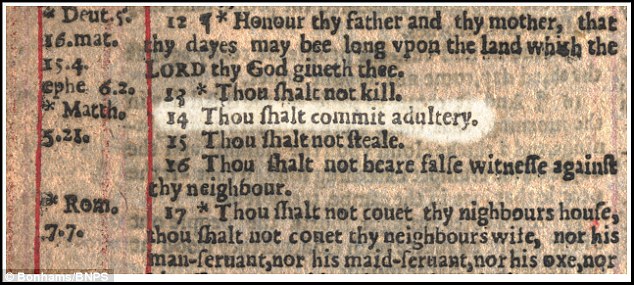The Steve Laube Agency is committed to providing top quality guidance to authors and speakers. Our years of experience and success brings a unique service to our clients. We focus primarily in the Christian marketplace and have put together an outstanding gallery of authors and speakers whose books continue to make an impact throughout the world.
Our Service Philosophy

Content
To help the author develop and create the best book possible. Material that has both commercial appeal and long-term value.

Career
To help the author determine the next best step in their writing career. Giving counsel regarding the subtleties of the marketplace as well as the realities of the publishing community.

Contract
To help the author secure the best possible contract. One that partners with the best strategic publisher and one that is mutually beneficial for all parties involved.
Recent Posts
What Is a Book’s Trim Size?

Trim size is one of those terms we use frequently when talking about the dimensions of your printed book.
The term originates from the printing process, where the book’s pages are initially printed on large sheets, which are then folded, glued, and subsequently trimmed to a specific size. (This linked video shows the entire book printing process.) Go to your shelf, pull down a few titles, and measure the page dimensions to see a physical example of what is described below. (On a hardback, measure the pages, not the cover. The pages are the trim size.)
There aren’t any hard and fast rules about what size a book should be. It is determined by many factors, almost too numerous to explain. But there are some general guidelines and terms.
Below, I list the publisher jargon that describes a particular trim size followed by the dimensions of that book. The first number is the short-side measurement, the second number is the tall or long-side measurement. This is the measurement of the paper. A hardcover book has a cover that is slightly larger than the trim size of the paper itself.
Mass Market – 4.25″ x 7″
These books are the ones you might see in the grocery-store checkout line or in an airport store. Years ago, special racks and shelves were built specifically for this size. It suggested an inexpensive version of a book. Most often, this is used in the fiction category. Recently, this trim size has been slowly eliminated by most major publishers because large chains, like Walmart, rarely carry them.
Book contracts often have a separate royalty rate for this mass-market trim size since the retail price is lower and, in many cases, the book can be returned to the publisher by simply tearing the cover off and returning that stripped book cover. It is called “Strip Cover Returns.”
Trade Paperback – ranges from 5.5″ x 8.5″ to 6″ x 9″
This is the go-to trim size for most paperbacks in today’s market. Fiction tends toward the 5.5″ x 8.5″ size, but not always. This smaller size is also efficient because it is the dimension of a regular piece of paper folded in half.
The larger 6″ x 9″, for some publishers, is the default for textbooks or certain types of nonfiction.
There are times where the larger trim size is an advantage because there is more “real estate” for the content to fit. Thus, you can keep the content the same but use fewer pages to print, which costs less money. There is a minor difference in cost between the two sizes.
Manuals or Workbooks – 8.5″ x 11″
This is a common trim size because each page is like a regular sheet of paper. The only problem with this is in a brick-and-mortar store. Bookstore shelves are only 10 inches high. Thus, workbooks are either placed on their side on the shelf or stuck on the top corner, making them hard to find later.
A number of smart publishers realized this drawback and use a 7″ x 9″ trim size for workbooks. This size is also more convenient for the user.
Other Trim Sizes
I can hear you saying, “But I have books that are very different from any of these mentioned!” There are no rules per se. Gift books, children’s books, devotionals, etc., can take almost any form. For example, I have a Bible timeline book in my office that is 17.5″ x 14″ with foldout pages.
The only limitation is the publisher’s creativity!
Who Decides the Trim Size?
Early in the publishing process, the acquisitions editor talks to marketing and sales to discuss trim size, especially if something a little different than normal will be used.
During my time at Bethany House, I experimented with nonfiction books printed on 6″ x 8.5″ paper. We had been told that 6 x 9 would not work with the racks in grocery stores and airport spin racks. So we trimmed a half inch off the long side, and they fit! We were able to place several nonfiction titles in those racks because of that trim-size choice.
Your Turn
Share with us the trim size mix of books on one of the shelves in your library. Are they mostly 5.5″ x 8.5″ trade paperbacks? Or something else?
Leave a Comment
Fun Friday – October 24, 2025
There seems to be something in my eye. Maybe watching this video will explain. I’m not crying. You are crying. (If you can’t see the video in your newsletter, please click through to watch on the site.) ShareTweet
Jenga Books
Jenga is a game invented over 50 years ago, consisting of 54 small wooden blocks stacked in a tower. Players take turns removing blocks from the stack and placing them on top, making the tower increasingly unstable. When someone causes the tower to fall, they lose. The trick is to place a block in a precarious position, so the next player has no option but to make the stack collapse. Personally, of all the “wood” games, I prefer Lincoln Logs. I think of the Jenga game when I review a book proposal, and the premise of the book is built …
The Worst Proofreading Error of All Time
Take a close look at the picture above. Read verse 14 out loud. The word “not” is missing. As in “Thou shalt ___ commit adultery.” It is from an edition of the Bible published in 1631, now affectionately known as “The Sinners Bible” or “The Wicked Bible.” Adulterers of the realm celebrated! (Just kidding.) The Royal Printers in London, Robert Barker and Martin Lucas, were to blame. It was meant to be a simple reprint of the King James Bible, first released in 1611. To this day, we don’t know if it was a simple mistake or if it was …
Fun Friday – October 17, 2025 – The ISBN Turns 60!
This coming weekend, a milestone will be reached. The International Standard Book Number (ISBN) system turns 60 years old. That seemingly simple group of digits has had a lasting impact on our industry. Book nerds of the world unite. Let’s celebrate sixty years of the ISBN! (Party balloons are floating and party horns are sounding.) Below is an edited version of something the International ISBN Agency wrote a few years ago: In the book world, we’ve come to take International Standard Book Number (ISBN) – that 13-digit number found on the copyright page or back of a book – for …



